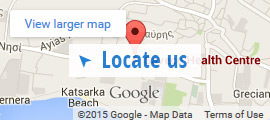
Herpes Zoster (Shingles)

Herpes Zoster which is commonly known as (shingles) is caused by the same virus that causes chickenpox. Following an episode of chickenpox the virus travels from the skin along the nerve paths to the roots of the nerves in the central nervous system. Here the virus can lie dormant for many years and in some people forever.
When the virus is re-activated it then causes the symptoms of shingles. It is not clear why the virus should suddenly become active; however a weakened immune system, stress, injury or certain medicines can reactivate the virus causing it to spread along the nerve fibres to the particular area of the skin supplied by the involved nerve. (This is called a dermatome). In most cases a cause for the reactivation of the virus is never found.
Shingles generally affects the elderly, but can occur in children who have had chickenpox within the first year of their lives and in individuals whose immune system is weakened.
Only individuals who have had chickenpox can develop shingles. You cannot catch shingles from someone who has shingles. It is important however that individuals with shingles take care when in close contact with others.
Blisters on the skin contain the live virus Varcella Zooster Virus, if the blisters are broken then the live virus can be passed through direct skin to skin contact. If an adult or child is exposed to shingles at this stage and they have never had chickenpox then chickenpox may develop
SYMPTOMS
Pain, itching, tingling or burning of the skin are symptoms of shingles, this is due to reactivation of the virus spreading along the nerve tract. A rash appears around two to three days and blisters develop which resemble the lesions of chickenpox.
The blisters will follow the path of the individual nerve that comes out of the spinal cord. In some cases there may be patches or clusters of blisters or the entire path of the nerve may be blistered.
The rash usually reaches its peak in around three to five days. The blisters burst and begin to crust over. The crusts will start to fall off after two or three weeks. Some people can continue to experience pain after the crusts have fallen off. The pain can last for a few weeks' even months this is called post-herpetic neuralgia.
Lesions appear along a single dermatome and are only on one side of the body. The trunk of the body is most affected, showing a rectangular belt of rash from the spine around one side of the stomach or chest to the sternum.
While shingles is most common on the trunk, it can appear anywhere the nerves have been affected. The face, eyes, mouth and ears can also be involved. Care must be taken if blisters involve the eye as permanent damage can result.
If you have any concerns during your holiday in Cyprus contact or visit our Health Centre Dr. Savvas Economides M.D. Ayia Napa Cyprus.
in Agia Napa?
Giourin Gkagkarin 29,
5330 Ayia Napa
P.O. Box 30868,
5346 Ayia Napa,
Cyprus
in Larnaca?
Evagora Pieridi 11,
Larnaca





